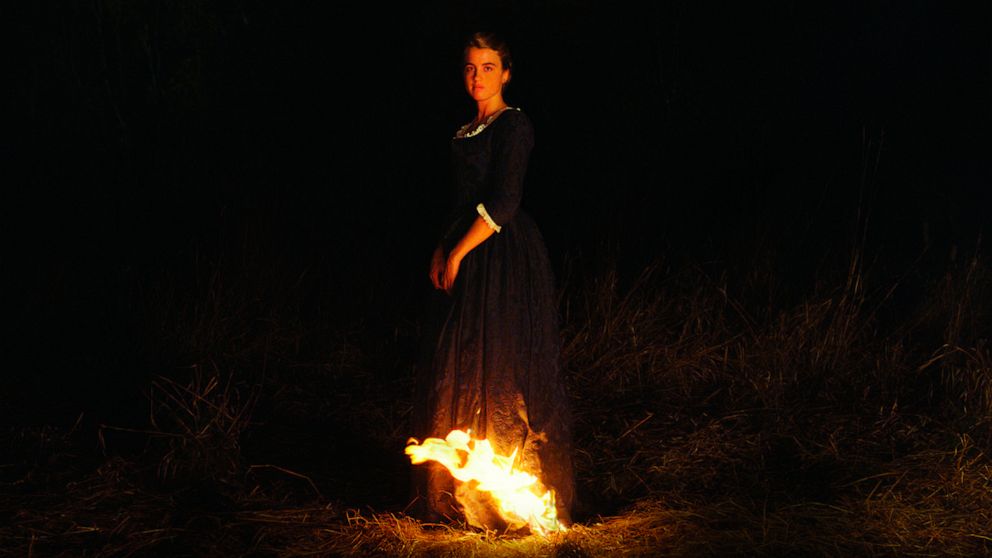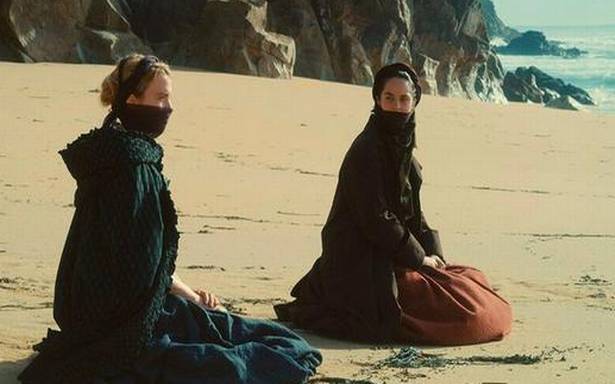My first introduction to the film Portrait of a Lady on Fire (2019) was through an Instagram post of two women looking at each other. There was something in that picture; just the sight of the two women tenderly looking at each other that caught my attention. Directed by Céline Sciamma, watching this film has been an eye-opening revelatory experience, which has helped me recognize a lot of my own emotions and feelings. The movie has been described as a “celebration of female gaze” by the critics. This phrase “female gaze” itself invokes intrigue. The movie is not the typical romantic love story we often see being portrayed in cinema, especially in Indian cinema. However, in all its subtlety, it represents the nature of desire for women, rarely seen in mainstream cinema anywhere. A representation of feminine desire.
There is no denying the fact that men and women perceive and experience the world differently. A man’s point of view is considered default, while women have to fight long battles to get their opinions heard and views recognized. Feminists have written about this for centuries. The noted 19th century feminist scholar Simone De Beauvoir wrote in her famous work, The Second Sex,
“Representation of the world, like the world itself, is the work of men; they describe it from their own point of view, which they confuse with the absolute truth.”

Women also ascribe and perceive themselves from this “male gaze”,a result of strict social conditioning. In the media, hyper-sexualization of women’s bodies is common. Focused shots of breasts, in every other “item number” of Bollywood to skimpily dressed women sprawled upon everything from cars to counters to look seductive, are just the tip of the iceberg as in how male gaze dominates the media we consume. The idea of romance in most films is nothing but a manifestations of male gaze. Veronica trying to become “traditional” in the movie Cocktail (2012) to appease her boyfriend is just one example of this. It is difficult to find a woman exercising control over her romantic endeavour; She is most often, passive recipient of a man’s romantic feelings. Portrait of a Lady on Fire is refreshing in this very sense. The storyline revolves around the lives of women, and their daily, lived realities. The movie is about Héloïse, a woman about to be married, the artist Marianne, and the young maid Sophie, in Héloïse’s house. All these women have their independent lives and backstories. Yet their lives are so intertwined. These women, despite having obvious differences in social class, make such a simple, supportive relationship, so much so that their relationship portrays a beautiful example of female solidarity. The movie aptly depicts how women find their ways to live, to enjoy, in whatever hidden way they can. Women’s lives have always been political, but instead of making overt description of how politics control women’s lives, it is subtle, represented, as it is felt by women. There is a scene in movie, where Sophie’s abortion is being performed in a secluded hut, with a baby lying on same bed, and baby grabbing Sophie’s finger as she feels pain. Sophie decided to have the abortion- no one is questions her choice, or puts her in dilemma of second guessing her stance. The brilliance of this scene is in how the message is portrayed. The fetus being aborted is not the baby, the one lying beside her is. A simple, yet powerful portrayal of debate surrounding abortion, of life versus bunch of cells. This is the brilliance of Sciamma. This movie portrays complex topics in a personal and powerful way, being grounded in experiences of these women. Héloïse’s marriage is fixed; Marianne, the painter, is hired by Héloïse’s mother to draw a portrait of Héloïse, which she can send to her already chosen suitor. Héloïse has rejected the previous painter, who had drawn her by destroying their efforts because she didn’t see herself reflected in those portraits. Marianne is asked to draw Héloïse in a way in which Héloïse never gets to know that she’s being painted. She accompanies Héloïse on walks, spends time with her, observes her, and paints her. Here starts a masterful portrayal of female gaze, how through Marianne’s eyes, we can see how women observe women; they look at each other. In most movies, women are just there as secondary characters, either as eye candy, or to push the plot for male characters. John Berger, renowned art critic, said, in his book, “Ways of Seeing”:
“Men look at women. Women watch themselves being looked at. This determines not only most relations between men and women but also the relation of women to themselves. The surveyor of the woman in herself is male: the surveyed female. Thus she turns herself into an object – and most particularly an object of vision: a sight”
Berger, in saying, “the surveyor of women in herself is male, the surveyed female”, is talking about how this male dominated, heterosexual narrative rules women’s bodies and their daily performances. Women present themselves, often not according to the comfort of their own self, but to satisfy the societal standards, which are male dominated. This experience is all too real for most women. All of us have changed our posture, our way of sitting, the way we speak, the language we speak when we are around men, to look more feminine and desirable. Movies also, sometimes consciously, most of the time unconsciously promote this. The norms of femininity, what looks good, what not, etc. are pushed onto women. Portrait of a Lady on Fire also does away with this; Héloïse and Marianne represent that. Just the act of looking at each other, becomes the way of seeing each other, as in, getting to know each other, feeling the first attraction of love. Attraction in this movie is not just bodily. The plot and acting is brilliant, the building up of desire, especially how it is for women, is also reflected in this “seeing”. In a way, the movie represents the much talked about, “being seen” aspect of love.
The movie has a scene where Héloïse, Marianne and Sophie are reading the Greek story of Orpheus, who wants to go to the underworld to bring back his dead wife, Eurydice. God of Underworld, Hades, allows Eurydice to follow back Orpheus to Earth, but he takes away Orpheus’ eyesight. He puts this condition if Orpheus turns to look back at Eurydice, he would lose her forever, and he does, and loses his wife. This story being in the plot, makes it more interesting. We are all aware of the phrase, “if looks could kill”. One can infer that same is implied here, that this nature of seeing is socially unacceptable. In this relationship which is frowned upon by society, being seen is like a blessing, but a huge risk to take upon oneself.
Mainstream movies have different portrayals of romance, of falling in love. It is often love at first sight or unrequited love. Also, most movies unconsciously have a heteronormative aspect to it- how men and women navigate the start of a relationship, and their desires are often quickly fulfilled in events like one night stand, or getting drunk or making out. This type of romance has been so normalized by society, it is often overlooked that romance, desire and falling in love for homosexual couples is different, because of its forbidden nature in society.

Films like Portrait of a Lady of Fire have two expectations to fulfil, one is that they have to represent queer lives-an expectation which is not the case with normal heterosexual romance movies. Many mainstream queer movies, like Blue is the Warmest Colour, made on heterosexual assumption of homosexual lives and seen as a representation of queer cinema, but ironically it does more harm to the queer narrative-. This is because it is more of straight peoples’ fantasy than real queer lived experiences. This movie is a period cinema, about white women . For a person like me, who has never been able to digest romantic movies, this movie was a surprise. I felt comfortable. I didn’t flinch at the sex scene for the first time. Being destined to marry a suitor already chosen, and having to have only fleeting love as an Indian woman, this felt real. The pining, longing, and ultimate feeling of being understood, felt soothing. Portrait of a Lady on Fire is this, a film representing the underrepresented lives of women, in an artistic way.
Vaishnavi Mangal is pursing her Masters at the Delhi School of Social Work,University of Delhi.













